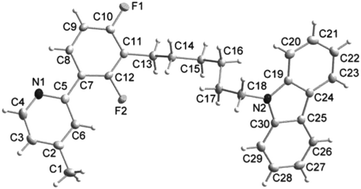Blue phosphorescent iridium(iii) complexes containing carbazole-functionalized phenylpyridine for organic light-emitting diodes: energy transfer from carbazolyl moieties to iridium(iii) cores†
Abstract
By introducing a hexylcarbazolyl substituent into a


 Please wait while we load your content...
Please wait while we load your content...